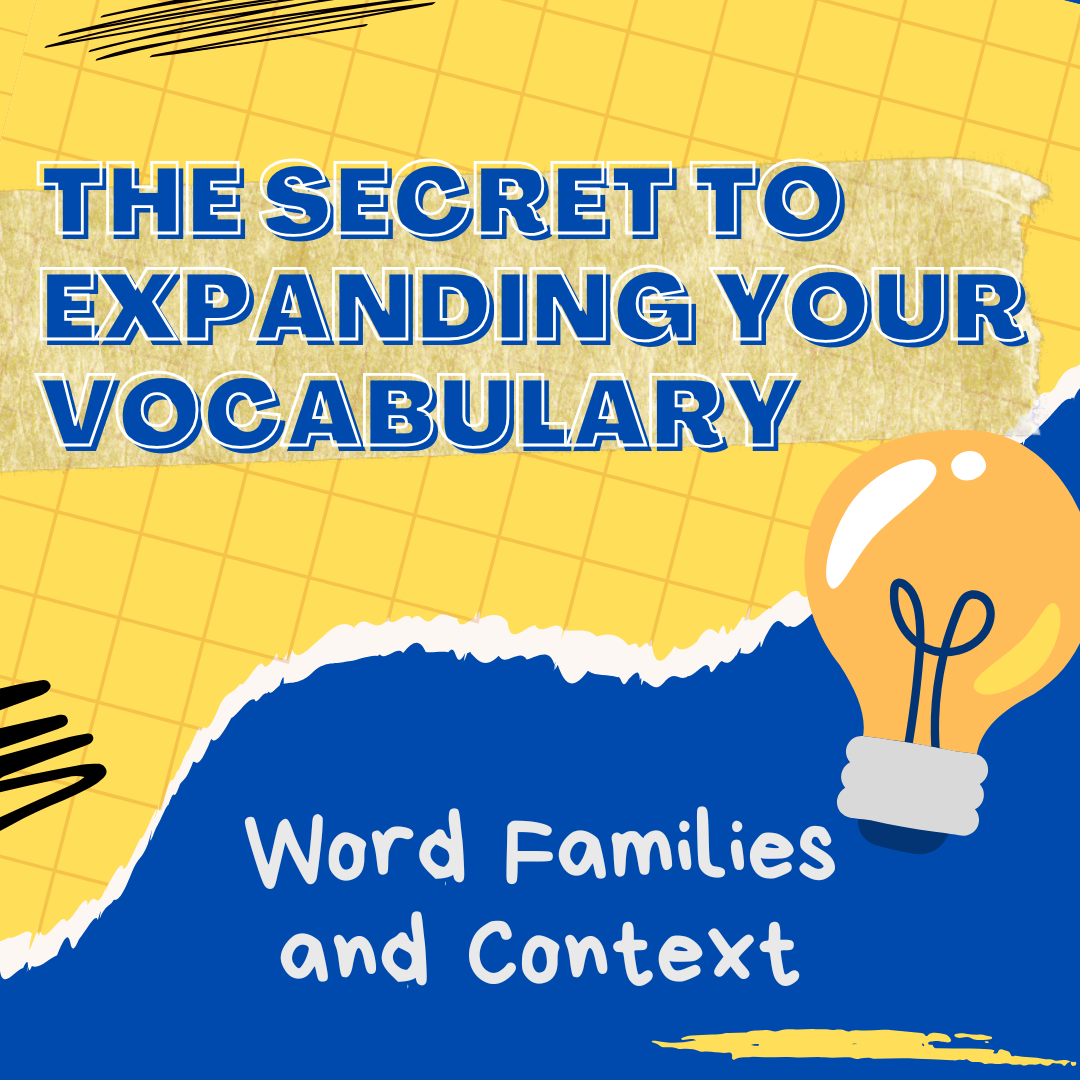Building a rich vocabulary is essential for mastering English, but learning individual words in isolation can feel overwhelming and ineffective. What if there was a way to make it easier? The key lies in focusing on word families and context. These strategies help you understand how words connect and how they are used in real life, making your learning more natural and memorable.
Let’s explore how word families and context can unlock the full potential of your English vocabulary.
Read our other articles:
How to Build a Book Review Habit
1. What Are Word Families?
A word family is a group of words derived from the same root or base word. They share related meanings and are often used in different grammatical forms. For example:
- Act → actor, action, active, activity, activate
- Happy → happiness, happily, unhappy
- Teach → teacher, teaching, taught, teachable
By learning these clusters of words, you don’t just memorize isolated terms—you acquire the tools to use language flexibly across various contexts.
2. Why Word Families Are Effective for Vocabulary Growth
- Efficient Learning: Learning one root helps you understand multiple related words.
- Stronger Retention: Words with shared meanings are easier to remember as they reinforce each other.
- Grammatical Awareness: Word families show how prefixes, suffixes, and word forms change meaning and usage.
3. How to Use Word Families in Your Studies
- Create Mind Maps: Draw a mind map with the root word in the center and related forms branching out.
- Practice with Sentences: Write sentences using different members of the word family (e.g., “The actor performed an action.”).
- Flashcards: Create digital or physical flashcards, grouping related words into families.
4. The Power of Context in Vocabulary Learning
Context refers to the situation, sentence, or environment in which a word is used. Learning words in context gives you insight into their meaning, tone, and appropriate usage. For example, the word “break” can mean:
- “Take a break” (pause/rest)
- “Break a glass” (damage)
- “Break a habit” (stop doing something)
By encountering words in context, you develop an intuitive sense of when and how to use them.
5. Techniques for Learning Vocabulary Through Context
- Read Books or Articles: When you see a new word, note the sentence it appears in. This will help you understand its meaning and usage.
- Watch TV Shows or Movies: Pay attention to how words are used in conversations.
- Context Clues: Train yourself to look for hints in the surrounding text to guess the meaning of unfamiliar words.
6. Combining Word Families and Context for Faster Learning
To supercharge your vocabulary learning, try combining both methods:
- Step 1: Read a passage and highlight new words.
- Step 2: Identify the word families of the highlighted words.
- Step 3: Note the context in which they are used to reinforce meaning.
- Step 4: Write sentences using these new words in different forms.
This combination ensures that you not only memorize words but also know how to use them confidently.
Final Thoughts
Expanding your vocabulary doesn’t have to be tedious or confusing. By focusing on word families and context, you can streamline the learning process, improve retention, and develop a deeper understanding of how English works. Use these strategies consistently, and you’ll see your vocabulary grow faster—and with less effort—than ever before!
Download Bookvo Now!










